Politics & Economy
US-Vietnam Partnership must Prioritize Vietnamese Education
Published on
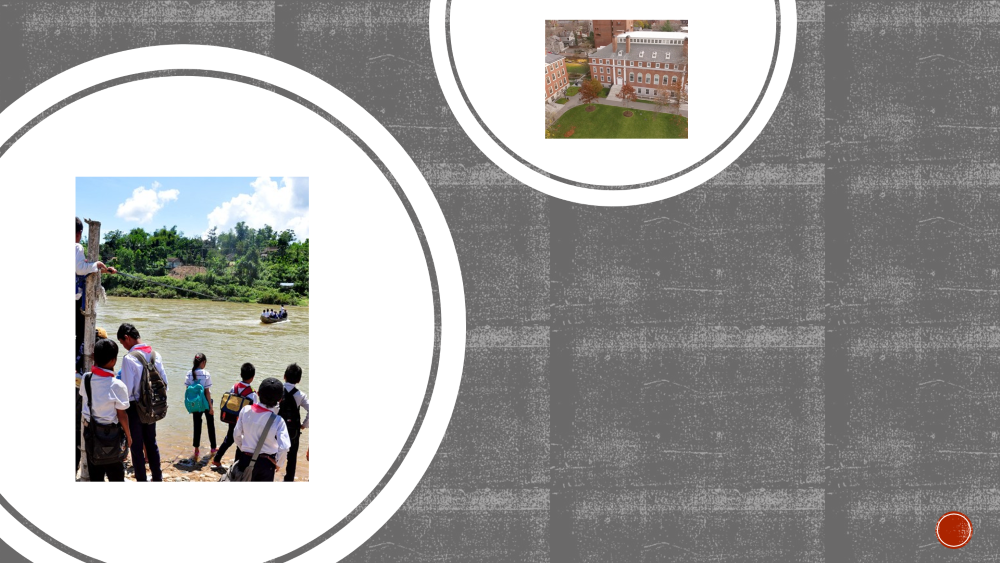
The unexpected visit to Vietnam by Vice President Kamala Harris less than 10 days after the fall of Kabul signals a historic shift in geopolitics. Embracing its former enemy in Southeast Asia, the United States has formulated a new Indo-Pacific vision for which Vietnam is the key. For this vision to be realized, both countries must take significant steps to redefine and rebuild their relationship. A meaningful US-Vietnam partnership must be built on respect, trust, and a renewed commitment to advancing Vietnamese education.
- Education in the History of US-Vietnam Relations
Education was a critical issue from the earliest moments in US-Vietnam relations. More than 75 years ago, Ho Chi Minh recognized the critical relationship between education and sovereignty and sought to build a new international partnership with the United States. Echoing the language of the US Declaration of Independence, Ho Chi Minh issued the Vietnamese Declaration of Independence in September 1945. The French, he stressed, “have built more prisons than schools” in Vietnam [1]. Two months later, Ho Chi Minh appealed to the US again in a letter addressed to James Byrnes at the US State Department, begging “to send to the United States of America a delegation of about 50 Vietnamese youths” for education and training in Engineering and Agriculture [2].
75 years later, this critical aspect of US-Vietnam relations remains underdeveloped and remains a risk to Vietnamese sovereignty. Vietnamese sovereignty depends on sustainable development in the education sector to ensure sustainable economic development. Yet, the current US-Vietnamese partnership sadly has maintained an outdated developmental model focused on GDP and trade volume [3]. This has, on the one hand, enabled Vietnam to quickly rise to the status of a middle income country [4]. Vietnam’s large domestic labor supply has been viewed as a valuable resource for both countries, as US companies acquire cheap labor [5] and Vietnam benefits from gains in key indicators of economic growth (e.g., employment, trade volume, and GDP) [6]. This model is critically flawed and unsustainable, however, as education is severely under-recognized and undervalued. Vietnam’s supply of cheap labor has become a liability if Vietnam hopes to join the ranks of high-income countries. As Adam Smith wrote in Wealth of Nations centuries ago, the difference between wealthy and poor nations is related to the knowledge and skills of the population but not the size and working hours of the labor supply [7]. Vice President Harris knows this better than most, which is why during her time as Attorney General of California she reviewed education policies to ensure the future of her state’s economy. Undereducated students, she knew, were a threat to the economy of California and the nation, which is why she implemented some of the strictest truancy laws the nation had ever seen [8]. Yet, to date, America has done little to show its commitment to the development of Vietnamese education. If America seeks a partnership with Vietnam, Vice President Harris must take tangible steps to demonstrate America’s long-term commitment to Vietnamese education.
A lack of knowledge and skills in key sectors in Vietnam not only poses a direct threat to economic development but also damages the territorial integrity of the nation and wastes key natural resources. Vietnam has been unable to appropriately address and manage agricultural and industrial waste, environmental degradation, and environmental disasters and emergencies [9], has made little progress in diagnosing the causes and proposing solutions to rising sea levels and saltwater intrusion, which affects farm lands and fresh water supplies throughout the country [10], and has not even begun to prepare for the devastating consequences rising sea levels pose directly to more than 17 million residents in the Mekong River Delta area and indirectly to the nation as a whole [11]. These environmental threats offers an opportunity for the Biden administration to work closely with the government of Vietnam to prevent an environmental, economic, and political disaster while securing valuable natural and human resources.
The US has certainly demonstrated its commitment to helping Vietnam mitigate the human cost of disasters. After Typhoon Molave struck central Vietnam in October 2020, USAID partnered with the Vietnam Red Cross Society and Catholic Relief Services to provide humanitarian support. USAID provided $6,299,615 in humanitarian relief funds together with training to “conduct damage and needs assessments following disasters, coordinate and distribute emergency assistance, and effectively deliver first aid and water, sanitation, hygiene services” [12]. The US has again demonstrated its commitment to Vietnam as the nation faces the dire consequences of COVID-19, transferring vaccine technologies to aid in the fight against the pandemic [13]. But these diplomatic gestures are far from sufficient. Reactionary approaches or technology transfers pale in comparison to proactive, preventative measures to consistently develop domestic education and training.
This is a lesson Vietnam’s neighbors in Korea painfully learned after their post-war developmental period. Both North and South Korea initially prioritized materiality in their rush to overcome poverty and rebuild. Their economic developmental trajectory diverged in the late 1980s when South Korea shifted its focus to reforming education and gaining membership in the OECD [14], while North Korea followed a strategy of socialist internationalism based primarily on the exporting industrial goods, and the exchange of materials, technologies, and labor [15]. In negotiations with the US, North Korea made the critical mistake of prioritizing the transfer of technologies, resulting in decades of isolation from US-based international trade networks and partnerships [16]. Another key difference in the developmental trajectories of the two countries was the receipt of humanitarian aid versus education volunteers. In their book Peace Corps Volunteers and the Making of Korean Studies in the United States, Historians Seung-kyung Kim and Michael Robison highlight the critical role of Peace Corps volunteers in South Korea’s post-war reconstruction period. They note that between 1966 and 1981 the Peace Corps sent more than 2,000 English teachers and health care workers to South Korea [17]. In the same time period, North Korea was suspicious of foreign teachers and instead requested and received billions in international humanitarian aid [18]. Peace Corps volunteers returned to the United States to establish Korean Studies departments in universities across the United States, creating a bridge for Korean education migrants and eventually forging a path for the formation of lasting institutions. Today, South Korea has arguably gained a high return for their investment, as it continues to benefit from institutional ties with American universities in the implementation of its government-sponsored education program TALK (Teach and Learn in Korea) and EPIC (English Program in Korea) [19]. These early relationships with American teachers created long-lasting social ties that enabled a steady flow of human capital that continues to support the economic development of South Korea.
These lessons offer important insights for Vietnam. The critical flaw in bilateral US-Vietnam relations is an inadequate exchange and unequal flow of human capital. Vietnam continues to request humanitarian aid or funding resources for various research projects but severely neglects forming and maintaining human relationships with American intellectuals.
- Education in Contemporary US-Vietnam Relations
Intergovernmental failure to invest in long-term relationships between American and Vietnamese intellectuals has severely hindered the development of education in Vietnam.
Government sponsored study abroad programs for Vietnamese students is a case in point.
The 2016 Vietnam Migration Profile reveals that the Vietnamese government only sent 32 students to the United States that year [20]. In addition, the US government sponsors 20 Vietnamese students annually through the Fulbright Vietnamese Program [21]. Notably, the Vietnamese state sent 722 students to Russia the same year, highlighting the substantially weaker investment in strengthening the US-Vietnam partnership.
The US-Vietnam partnership has instead been left up to the whims of the private sector and familial investment. It is clear from US Census and State Department data that Vietnamese citizens dream of living or studying in the United States. The number of US visas issued to Vietnamese citizens has continued to increase since the early 1990s [22], and by 2015 the number of F1 student visas rose to 17, 674, far exceeding other nonimmigrant visa categories [23]. The Vietnamese population in the United States has doubled since 2000, and today there are more than two million Vietnamese people living in the United States [24]. At the same time, private US citizens have increasingly moved to Vietnam, helping to develop the English language and tourism sectors. By 2016, 19,526 Americans had decided to stay and marry Vietnamese citizens [25]. These personal relationships have contributed to the development of a variety of sectors, and high-skilled Americans married to Vietnamese citizens can be found managing restaurants in Quang An or 5-star hotels in Bac Tu Liem. But, American experts have been blocked, partially for political reasons, from contributing to the development of Vietnamese education.
As an American married to a Vietnamese intellectual, whom I met when we both were students at Harvard University, I have experienced and witnessed first hand problems that must be overcome to further develop Vietnamese education.
First, in America, ideological walls have been built in many Vietnamese Studies Departments at the university level. There are two listservs in Vietnamese Studies with little interaction or dialogue between the two groups. US exchanges take place in English and remain obsessed with historical or political topics and are most often stuck dissecting the US-Vietnam war. Vietnamese exchanges take place primarily between Vietnamese citizens and have since expanded dramatically to focus on pressing social and economic issues. But, political and financial constraints prevent American academics from joining departments at or opening centers in universities.
Vietnam wastes a long-term investment opportunity and instead focuses on short-term gains.
American academics in Vietnam are only welcomed short-term and only if they bring external funding for their Vietnamese sponsors. American academics are not offered long-term visas to work at universities, and instead are recruited unofficially to teach or edit English regardless of their professional training. The result is that valuable opportunities to develop Vietnamese higher education are wasted.
Currently, the US-Vietnam relationship is trapped in a donor/recipient model. The US sends financial resources and assumes the knowledge and skills of Vietnamese leaders is sufficient to manage and oversee agreed upon projects. These assumptions are especially problematic when the failure of a project or failure to properly allocate funds are explained away as corruption rather than a lack of skills and training necessary to manage complex projects. This perpetuates long-standing mistrust.
These issues must be included in negotiations with Vice President Harris and form the foundation of an equitable partnership based on trust.
- Creating the Foundation of an Equitable US-Vietnam Partnership
Both governments must make a commitment to Vietnamese education by increasing the number of high-skilled workers in Vietnam.
The first step is to address the inequitable flow of human capital from Vietnam to the United States. Migration data consistently shows that over half of Vietnamese education migrants do not return to Vietnam. Surveys at Vietnam National University additionally reveal the substantial grievances of Vietnamese citizens who attempt to return to contribute to their university departments.
The Vietnamese government must address these grievances to support the further development of higher education in Vietnam. Policies should be put in place in Vietnam to ensure Vietnamese academics who have studied in America have opportunities for mobility inside the university. In addition, it is necessary to rescind policies restricting the social mobility of Vietnamese citizens married to foreign nationals.
Both governments should make a commitment to create cultural centers, academic institutions, public libraries, and university departments to facilitate the formation of strong social ties that can become the pathway for steady, equitable flows of human capital. In other words, both governments ought to rescind outdated laws preventing intellectual exchange and actively create new programs jointly managed by US and Vietnamese citizens to encourage intellectual exchange and international cooperation.
Building, expanding, and strengthening intergovernmental institutions is an additional step necessary to ensure the steady, reciprocal exchange of high-skilled workers and human capital. Vietnam’s recent invitation of the Peace Corps is a step in the right direction. Vietnam should additionally demonstrate its commitment to retaining high-skilled Americans residing in Vietnam by creating permanent appointments for American intellectuals in university departments.
Human capital cannot be transferred sustainably from individuals to communities without political and institutional support at the intergovernmental level. In negotiations with Vice President Harris, Vietnamese leadership should remember President Ho Chi Minh’s prescient message: Vietnamese sovereignty depends on education. It naturally follows that developing Vietnamese education must be at the center of a US-Vietnam partnership.
Works Cited
- See, The Constitution of the Socialist Republic of Vietnam
- See, Porter, G. (1980). Vietnam: The Definitive Documentation of Human Decisions.
- This is clear in the emphasis of particular economic data outlined by the Ministry of Industry and Trade. See, General Statistics Office of Vietnam
- See, World Bank
- See, Vietnam’s economy now driven by cheap labor, needs productivity push: official (VNExpress)
- The General Statistics Office 2020 report “Exports by Country” reveals this clearly. Vietnam’s exports to the United States far surpassed that of other countries.
- Smith, Adam. (2008). An Inquiry into the Nature and Causes of the Wealth of Nations. Oxford University Press.
- Kamala Harris consistently emphasized her concerns about truancy during her time as Attorney General of California. In her 2016 Attorney General Report on California’s Elementary School Truancy and Absenteeism, she outlines evidence of “the attendance crisis.”
- In 2016 alone there were 50 major toxic waste scandals involving FDI companies. In 2018, a domestic light bulb factory in Hanoi leaked as much as 27 kilograms of mercury into the environment. In 2019, 250,000 Hanoi families did not have access to clean water after oil was illegally dumped in the Red River Delta. These situations all highlight the serious regulatory challenges facing the Vietnamese government. Additionally, saltwater intrusion has led to severe droughts. The Vietnamese government issued an emergency response plan after saltwater intrusion severely affected 18 provinces in three regions in 2015. The Vietnamese government remained heavily dependent on humanitarian assistance, requesting $48.5 million in aid.
- The Vietnamese government has made efforts to support locals in the Mekong Delta River area affected by saltwater intrusion, but ensuring fresh drinking water and preventing its recurrence remain a pressing problem.
- Notably, the rice fields of the Mekong River Delta area are at high risk. Việt Nam Panel on Climate Change deputy chairman Trần Thục noted that by 2100, 40 percent of the Mekong River Delta area could be permanently flooded if temperatures continue to rise.
- The Intergovernmental Panel for Climate Change warned that Vietnam would be one of the countries most affected by Climate Change. As of 2019, the population of the Mekong River Delta area was 17, 273, 630.
- See: USAID 2021
- See: USAID
- Specifically, Korea began by reforming tertiary education in the 1980s and the quality of primary and secondary education in the 1990s. An emphasis on government investment and international exchange began in the 1990s and continued in early 2000. These changes enabled South Korea to become a high-income country and join the OECD in 1996. See, Lim, Seung Jae (2018) “The Development of Education in South Korea: Analysis on the Basis of Relationship between Higher Education Development and Economic Growth.” Masters Thesis. California State Polytechnic University.
- For a comprehensive discussion of North Korea’s socialist internationalism, see Young, Benjamin (2018) “Guerilla Internationalism: North Korea’s Relations with the Third World.” Dissertation. George Washington University.
- The 1994 Agreed Framework is an important piece of evidence for North Korea’s overemphasis on materiality and technological transfer in its dealings with the United States. This is particularly evident because the Clinton Administration established diplomatic ties with Vietnam one year later in 1995.
- Kim, S., & Robinson, M. (Eds.). (2020). Peace Corps Volunteers and the Making of Korean Studies in the United States. University of Washington Press. Retrieved August 24, 2021, from here.
- See, Jung, H. J., Park, G., Ji, M., & Rich, T. S. (2021). “Why Help North Korea? Foreign Aid to North Korea and Its Determinants, 2002–2018.” Pacific Focus, 36(2), 202-228.
- The South Korean Ministry of Strategy and Finance report reveals that the South Korean Central government provides a 20% education subsidy based on internal and education taxes. Since implementing the TALK and EPIC programs in 2008, annual revenues have consistently exceeded expenditures every year except for 2009 and 2010.
- Vietnamese Student Program AY 2022-2023
- Viet Nam Migration Profile 2016
- See the U.S. Department of State-Bureau of Consular Affairs
- See: Vietnamese in the U.S. Fact Sheet (Pew Research Center)
- Viet Nam Migration Profile 2016
You may like

Translation: The Decision in 2013 of the Central Committee of the Communist Party of China on Certain Major Issues Concerning Comprehensively Deepening Reform

Thủ Đức Demonstration High School: A Modern Educational Policy and Teaching Method of the Republic of Vietnam

Southeast Asia falls into China’s Trans-Asian Railway Network

A Proposed Outline for a Study on Republicanism in Modern Vietnamese History

Tran Le Xuan – Diplomatic Letters

Vietnam’s unresolved leadership question

Rethinking History and News Media in South Vietnam

“The Vietnam War Was an Unwinnable War”: On Factuality and Orthodoxy

Democracy in action: The 1970 Senatorial elections in the Republic of Vietnam (Part 1)

Pandemics and Morality: Lessons from Hanoi
US-VIETNAM REVIEW
-
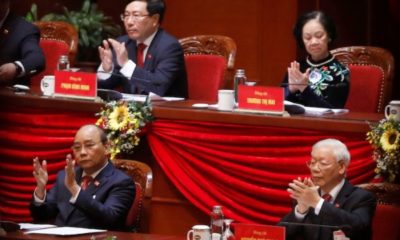
 Politics & Economy4 years ago
Politics & Economy4 years agoVietnam’s unresolved leadership question
-
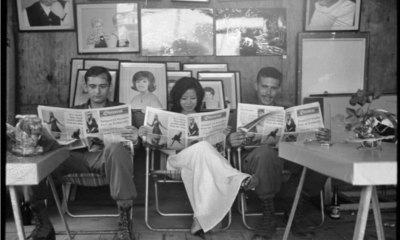
 Politics & Economy2 years ago
Politics & Economy2 years agoRethinking History and News Media in South Vietnam
-
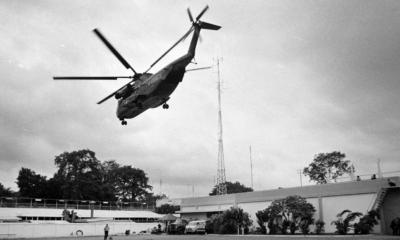
 After 19751 year ago
After 19751 year ago“The Vietnam War Was an Unwinnable War”: On Factuality and Orthodoxy
-
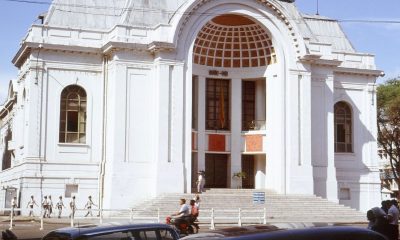
 ARCHIVES5 years ago
ARCHIVES5 years agoDemocracy in action: The 1970 Senatorial elections in the Republic of Vietnam (Part 1)
-

 Society & Culture5 years ago
Society & Culture5 years agoPandemics and Morality: Lessons from Hanoi
-

 Politics & Economy4 years ago
Politics & Economy4 years agoThe Limit to U.S.-Vietnam Security Cooperation
-

 Politics & Economy5 years ago
Politics & Economy5 years agoNational Shame: How We (Americans) can learn from Nguyễn An Ninh
-
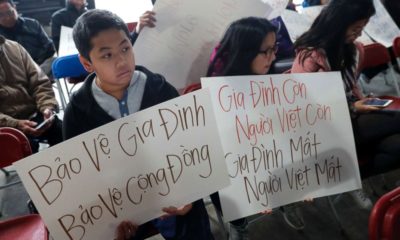
 Vietnamese-America4 years ago
Vietnamese-America4 years agoDeporting Vietnamese Refugees: Politics and Policy from Bush to Biden (Part 1)


